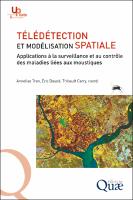Télédétection et modélisation spatiale
Applications à la surveillance et au contrôle des maladies liées aux moustiques
| dc.contributor.editor | Tran, Annelise | |
| dc.contributor.editor | Daudé, Éric | |
| dc.contributor.editor | Catry, Thibault | |
| dc.date.accessioned | 2023-01-10T10:57:25Z | |
| dc.date.available | 2023-01-10T10:57:25Z | |
| dc.date.issued | 2022 | |
| dc.identifier | ONIX_20230110_9782759236282_11 | |
| dc.identifier.uri | https://library.oapen.org/handle/20.500.12657/60578 | |
| dc.language | French | |
| dc.subject.classification | thema EDItEUR::K Economics, Finance, Business and Management::KN Industry and industrial studies::KNX Industrial relations, occupational health and safety::KNXC Health and safety in the workplace | en_US |
| dc.subject.other | image analysis | |
| dc.subject.other | mapping | |
| dc.subject.other | contamination | |
| dc.subject.other | issue | |
| dc.subject.other | entomology | |
| dc.subject.other | epidemiology | |
| dc.subject.other | risk management | |
| dc.subject.other | biological control | |
| dc.subject.other | modelling | |
| dc.subject.other | pest | |
| dc.subject.other | prevention | |
| dc.subject.other | health | |
| dc.subject.other | information system | |
| dc.subject.other | virus | |
| dc.title | Télédétection et modélisation spatiale | |
| dc.title.alternative | Applications à la surveillance et au contrôle des maladies liées aux moustiques | |
| dc.type | book | |
| oapen.abstract.otherlanguage | Mosquitoes are vectors of many disease-causing agents, such as malaria, dengue, chikungunya and yellow fever. According to the World Health Organisation, they cause several hundred thousand deaths each year. They are also the cause of zoonoses, such as Rift Valley fever and West Nile fever. In this context, there is a great need for operational tools to guide surveillance and control actions, both in the South - tropical and subtropical areas are the most affected by mosquito-borne diseases - and in the North, where the establishment of new species such as the tiger mosquito increases the risk of disease emergence. Earth observation imagery is of great interest to meet these needs: the spatial distribution and temporal dynamics of mosquitoes are influenced by climatic (temperature, precipitation, humidity) and environmental (availability of water areas, vegetation) variables, indicators of which can be derived from satellite imagery. Many recent studies have developed innovative methods combining remote sensing and spatial modelling to predict the spatial and temporal dynamics of mosquito vectors and associated diseases. Beyond the feasibility study, some of these methods have led to tools and processing chains that are now operational and used by public health actors and vector control operators. This book, intended for students and researchers as well as public health actors, presents a summary of this research work and these tools. | |
| oapen.identifier.doi | 10.35690/978-2-7592-3629-9 | |
| oapen.relation.isPublishedBy | f3266e68-be04-43a2-896c-b3499f43d67e | |
| oapen.relation.isbn | 9782759236282 | |
| oapen.relation.isbn | 9782759236299 | |
| oapen.relation.isbn | 9782759236305 | |
| oapen.pages | 148 |

